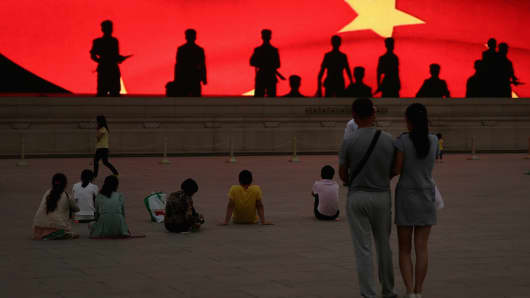China also seems ready to reciprocate. China's President Xi Jinping told the 10,000 people gathered at the ceremony of the 77th anniversary of the Nanjing Massacre (atrocities committed by Japan's occupying forces in 1937) last December that China should not "bear hatred against an entire nation just because a small minority of militarists launched aggressive wars."
Japan knows the conditions of a rapprochement with its crucially important trade partner. China also knows that improved relations with Japan and a compromise on territorial claims would calm down similar disputes with its other Asian neighbors.
Hostile inter-Korean relations are another obstacle on the way to a stronger economic development in Northeast Asia. China and Japan could help with contacts between Seoul and Pyongyang. China, in particular, could use its strong trade and investment ties with Seoul and its "special" relationship with Pyongyang to reduce tensions between estranged Korean cousins.
That will be tough, though. But it does seem that Koreans want to talk about a broad range of economic, social and security matters.
Reviving 'Chindia'
Snarled up by overlapping territorial claims along their 3,500-kilometer frontier, the Chinese-Indian relations also looked hostile and crisis-prone until both countries agreed to move on. Who would have thought, for example, that instead of trading bullets and military incursions into contested areas, the Chinese and Indian border guards would be holding together a New Year party last week?
That unexpected bonhomie is an interesting sequel to the Chinese President Xi Jinping's visit to India last September. Sporting an impeccably tailored white kurta, Mr. Xi celebrated Indian Prime Minister Modi's 64th birthday in Ahmadabad, the capital city of the state of Gujarat, where his host earlier served as chief minister.
The key points of a Sino-Indian deal involve a settlement of border problems and China's large infrastructure investments – about $20 billion only in Indian railways. These investments would partly compensate for China's trade surplus with India, which amounted to $36.2 billion in India's fiscal year 2013-14.
Both issues are under active consideration. China's Foreign Minister Wang Yi announced during his visit to Delhi in early June of last year that Beijing was ready to settle border issues – a signal that China was eager to open up big investment and trade flows with India.
Investment thoughts
China's broadening economic transactions with the rest of Asia form a strong regional investment platform.
Political and security problems in Southeast Asia and on the Korean Peninsula are serious obstacles to a faster economic development, but there are important moves currently under way in both areas that should be watched.
Asian economy is part of China's development strategy. That is an objective where China won't fail to deliver.
Michael Ivanovitch is president of MSI Global, a New York-based economic research company. He also served as a senior economist at the OECD in Paris, international economist at the Federal Reserve Bank of New York and taught economics at Columbia.






